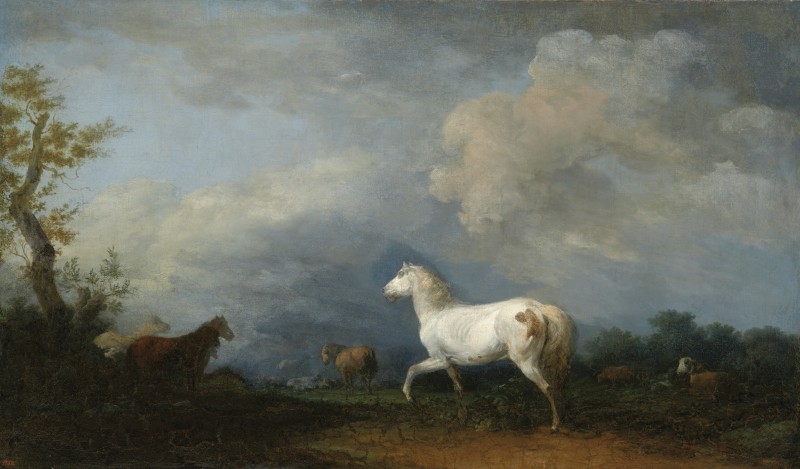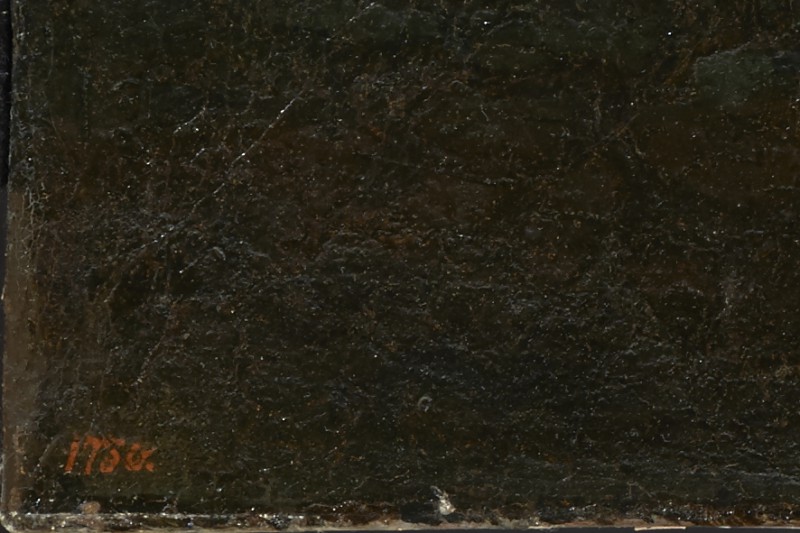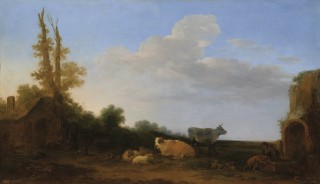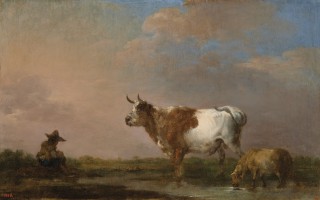Landscape with a White Horse and a Stormy Sky
- Date
- before 1792
- Object type
- painting
- Technique
- oil
- Material
- canvas
- Dimensions
- 77,9 x 132,0 cm
- Acquisition date
- 1792
- Location
- The Palace on the Isle - Portrait Room, ground floor
- Marks and inscriptions
- red number 1730 of the Stanislaw August collection, bottom left
- Place of Origin
- Dresden (Germany)
- Owner
- National Museum in Warsaw
- Acquisition name
- deposit; inv. no. M.Ob.406
- Museum number
- Dep 926
... .Casanova became famous, above all, as a painter of battle pieces. These paintings were made chiefly under the influence of Jacques Courtois (called Il Borgognone), as well as Philips Wouwerman, whose numerous works in the Elector’s Gallery in Dresden Casanova got to know—and copied—during his four year sojourn in that city. Inspirations from Wouwerman are not only to be found in Casanova’s scenes of skirmishes. The Łazienki landscape with the figure of the white horse as the central motif, the picturesque trunk of a withered tree closing one side of the composition, and the large expanse of sky with clouds are an excellent example of this. In Wouwerman’s oeuvre, the landscapes ‘with a white horse’ as defined by Birgit Schumacher, painted in the second half of the 1640s, form a separate group (see B. Schumacher, Philips Wouwerman (1619–1668), The Horse Painter of the Golden Age, vol. 1–2, Dornspijk 2006, p. 62). Casanova translates Wouwerman’s subject into his own artistic language: his brushwork is sketchy and fluid, he hardly uses any contours–his Venetian training and knowledge of the works of artists such as Marco Ricci, the Guardi brothers and Francesco Zuccarelli are clearly visible ... . [See D. Juszczak, H. Małachowicz, The Stanisław August Collection of Paintings at the Royal Łazienki. Catalogue, Royal Łazienki Museum, Warsaw 2016, no. 29, pp. 133–134.]





